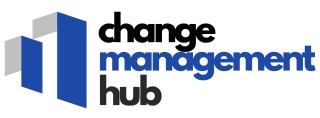
Understanding CMMS and Its Role in Change Management
The Importance of CMMS in Change Management
Understanding how Computerized Maintenance Management Systems (CMMS) are woven into the fabric of change management is essential for businesses aiming for seamless transitions. A CMMS plays a pivotal role by acting as the backbone of maintenance management and ensuring the continuity of operations during periods of change. It does this by providing a structured way to manage work orders, inventory, and equipment data systematically.
The integration of CMMS into an organization's change management strategy helps streamline processes, making them less daunting. The ability to access real-time data and manage maintenance tasks online through a centralized system equips employees and management with the tools necessary to adapt smoothly to new workflows and organizational shifts.
Enhancing Skills with CMMS Software
Through specialized training courses, staff can enhance their skills, particularly in using CMMS software efficiently. These courses provide users with the knowledge to maneuver through the system, handle work orders and preventive maintenance, and develop an understanding of inventory management. This intensive focus on training aids in reducing downtime and enhances overall productivity.
Alongside structured training options like MaintSmart, users gain access to free resources and support that empower them to tailor their learning experience. Whether it's learning through online training or accessing a maintenance software course, CMMS training is pivotal in fortifying the human component of change management.
The Role of CMMS Software in Maintenance Management
CMMS software serves as a conduit for effective management by automating and tracking maintenance tasks. It provides a configurable platform where businesses can generate and manage work orders and purchase orders, facilitating smoother operations and faster turnaround times. Key among these processes is preventive maintenance, which is central to maintaining equipment longevity and operational efficiency.
Through CMMS, organizations gain unparalleled insights into their assets, enabling better decision-making and strategic planning essential for change management. The capacity to customize and streamline data flow not only enhances efficiency but also supports the infrastructure needed for transformative business changes.
Key Benefits of CMMS Training
Maximizing Business Efficiency with CMMS Training
Proper CMMS (Computerized Maintenance Management System) training can significantly enhance an organization's efficiency by equipping users with the necessary skills to effectively use maintenance management systems. Here are some of the key benefits that arise from investing in comprehensive CMMS training courses:- Efficient Maintenance Operations: CMMS training ensures that maintenance work, including preventive maintenance and work order management, is conducted efficiently, reducing downtime for equipment and increasing productivity across the board.
- Enhanced Data Management: Effective training equips users with the knowledge to manage data accurately within the maintenance software. Proper data handling is crucial, as it supports decision-making and helps in maintaining updated inventories through inventory management.
- Improved Work Order Processes: Training in CMMS software facilitates more streamlined work order processes, allowing maintenance managers to prioritize tasks effectively and enhance the overall workflow within the management software.
- Reduction in Costs: With thorough training, organizations can better utilize features such as purchase order management and preventive maintenance, leading to cost savings through efficient operations and reduced equipment failures.
- Accessibility and User Proficiency: Online training options provide flexible access to resources, enabling employees to learn at their own pace. This results in higher user proficiency when interacting with the CMMS, ultimately fostering a culture of continuous improvement.
Challenges in Implementing CMMS Training
Overcoming Obstacles in CMMS Training Implementation
Implementing CMMS training can pose several challenges that organizations must address to maximize their benefits. As maintenance management involves intricate processes, the transition to a computerized maintenance management system (CMMS) requires careful planning and execution to avoid pitfalls. Firstly, the resistance to change is a common hurdle in any new software adoption. Employees accustomed to traditional maintenance methods may find it difficult to adjust to the new system. Ensuring user acceptance involves not just providing free cmms training but also offering continuous support and demonstrating how the system complements existing processes. Additionally, training complexity varies depending on the sophistication of the CMMS software. Some systems are feature-rich, covering work order management, inventory management, and predictive maintenance, leading to extensive training requirements. Tailored courses that consider the participants' skill levels can help make the learning curve smoother. Another issue lies in data migration and system integration. Moving data from old maintenance records into the new system can be time-consuming. It's vital to maintain data integrity and ensure all relevant information is accurately transferred into the maintenance software. Access to adequate resources is another constraint. Smaller budgets might limit the availability of extensive in-person training sessions. However, online training platforms offer a cost-effective alternative, providing employees with 24/7 access to learning materials. Finally, tracking progress and adapting training programs is essential. By evaluating feedback and performance metrics, management can refine training courses, ensuring they align with the desired outcomes for preventive maintenance and inventory management. These challenges emphasize the importance of strategic planning in CMMS software training. By addressing such obstacles, organizations can enhance remote work efficiency and maintain effective change management processes. For further insights, check out our in-depth analysis on enhancing remote work efficiency.Strategies for Effective CMMS Training
Strategies to Maximize Training Impact
Successfully training your team on CMMS (Computerized Maintenance Management System) involves a combination of strategic approaches that are tailored to ensure effective learning and implementation. For any organization, focusing on effective strategies can help in achieving significant improvements in maintenance management and overall productivity.
First, defining clear objectives and aligning them with the maintenance goals of your organization is crucial. Whether you are focusing on preventive maintenance or optimizing work orders, the training should reflect these organizational priorities. This ensures that CMMS training is not just a checkbox task but genuinely contributes to enhancing skills related to maintenance software usage and data handling.
- Leverage Online Courses: Utilize easily accessible online training platforms that offer CMMS courses. These can provide flexibility and time-efficient learning paths for your personnel, enabling them to learn and apply maintenance software skills effectively.
- Hands-On Experience: Encourage practical exercises with the actual CMMS software or its free trials. The more your team engages directly with the system, the more comfortable and adept they will become in handling work orders, inventory management, and other maintenance tasks.
- Role-Based Training: Develop specialized courses tailored to different user roles to cater to diverse responsibilities within the maintenance team. Customized training addresses specific challenges and supports system proficiency across various functions.
- Continuous Support: Post-training support is vital. Providing an efficient support mechanism allows users to resolve any ongoing issues swiftly, ensuring the work order system and maintenance processes run smoothly.
- Integrating Best Practices: Teaching best practices in CMMS usage can enhance the overall efficiency of maintenance operations. By familiarizing users with the software's best practices, organizations can optimize management software to support efficient maintenance workflows.
Each strategy you apply should be geared towards making the most of your investment in training, focusing on familiarity with the system, and the seamless application of acquired skills to improve operational outcomes. Remember, the right training can eliminate barriers to adapting to new processes and lead to superior maintenance management.
Measuring the Success of CMMS Training
Tracking the Effectiveness of Your Training Initiative
Measuring the success of CMMS training is crucial for organizations to ensure their teams are efficiently utilizing the software and contributing to the overall goals of maintenance management. Here are several approaches to consider:- Monitoring System Usage: By analyzing user interaction with the CMMS software, managers can identify how often employees log in, create work orders, or update data. Frequent use may indicate comfort with the system, while irregular usage might highlight areas requiring further training.
- Assessing Work Order Accuracy: The accuracy and timeliness of work order submissions can serve as a direct measure of training effectiveness. Properly trained staff are more likely to submit detailed, timely work orders that support streamlined maintenance operations.
- Evaluating Maintenance KPIs: Key performance indicators (KPIs) such as equipment uptime, mean time to repair (MTTR), and preventive maintenance compliance ratios provide quantifiable metrics. These can help determine if your training courses effectively improved performance.
- User Feedback and Surveys: Collecting feedback from CMMS users can offer insights into the training program's impact. Surveys can identify areas of strength and opportunities for improvement, fostering an environment of continuous learning and adaptation.
- Reviewing Inventory Management Improvements: After training, assess whether there have been improvements in inventory management. A well-trained team should be able to leverage CMMS features to optimize stock levels and streamline purchase order processes.
- Time and Cost Savings Analysis: Finally, examine whether the training results in measurable time and cost savings. Reducing the time spent on maintenance tasks and lowering operational costs are strong indicators of successful CMMS training.













